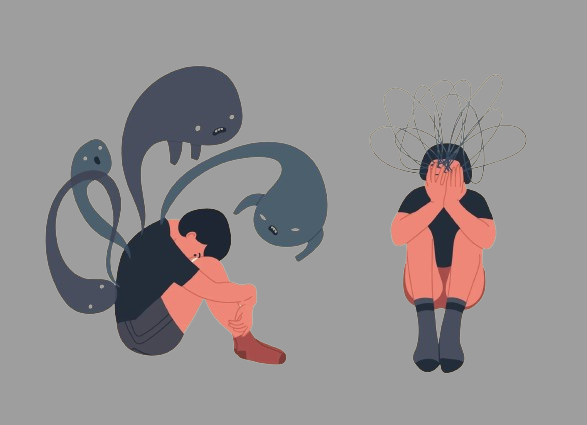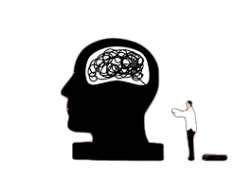Introduction
For decades, scientists believed that the human brain was fixed — that after childhood, its structure and abilities could no longer change. But modern neuroscience has completely transformed this view. Today, research reveals something extraordinary: the brain is not static but dynamic, adaptable, and capable of reshaping itself throughout life. This remarkable ability is known as neuroplasticity.

Neuroplasticity, or “brain plasticity,” refers to the brain’s capacity to reorganize its structure, function, and connections in response to experience, learning, or injury. It’s the foundation of how we form memories, acquire skills, adapt to challenges, and even recover after trauma or stroke. Understanding neuroplasticity gives us insight into how the brain heals and how we can actively shape our own mental and emotional growth.
What Is Neuroplasticity?
Neuroplasticity is the brain’s ability to change its neural pathways based on new information, experiences, or environmental changes. The term combines “neuro” (referring to neurons, or brain cells) and “plasticity” (meaning malleability or flexibility). In essence, neuroplasticity means the brain can reshape itself — much like soft clay molded by life’s experiences.
Canadian psychologist Donald Hebb was among the first to describe this concept in the 1940s, proposing the famous phrase: “Cells that fire together, wire together.” This means that when two neurons frequently communicate, their connection strengthens, forming more efficient networks. Over time, these neural pathways become the physical basis for habits, skills, and even personality traits.
How Does Neuroplasticity Work in the Brain?
The brain contains around 86 billion neurons, each connected through intricate networks. Neuroplasticity allows these neurons to form new connections or modify existing ones when we learn something new, practice a skill, or recover from an injury.
There are two main mechanisms involved:
- Synaptic Plasticity – Changes in the strength of connections between neurons.
- Structural Plasticity – Physical changes in the brain’s structure, such as growth of new neurons (neurogenesis) or new dendritic branches.
Neuroplasticity is driven by experience, repetition, and attention. Every time you learn or practice something, your brain reinforces the corresponding neural pathway, making it easier and faster to perform next time. This is why consistent practice leads to mastery — from playing piano to speaking a new language.
Types of Neuroplasticity
Neuroplasticity can be categorized into two main types:
- Functional Plasticity
– The brain’s ability to shift functions from a damaged area to an undamaged one. For example, after a stroke, other regions of the brain can take over lost functions like speech or movement. - Structural Plasticity
– The brain’s capacity to physically alter its structure through learning, memory, or new experiences. When you learn a new skill, your brain literally changes — new neural connections are formed and existing ones become stronger.
This flexibility is what enables recovery, adaptation, and continuous mental development throughout life.
Can You Train Your Brain to Change?
Absolutely. Neuroplasticity isn’t just a passive process — it can be actively stimulated. The brain changes in response to how we use it, meaning intentional actions can enhance its adaptability.
Research by neuroscientist Michael Merzenich, often called “the father of neuroplasticity,” demonstrated that targeted mental exercises could rewire the brain. His studies showed that practicing specific skills improves not just performance but also alters brain structure itself.
You can train your brain through:
- Learning new skills: Languages, instruments, or problem-solving activities.
- Mindfulness and meditation: Strengthen neural pathways linked to focus and emotional regulation.
- Physical exercise: Promotes neurogenesis in the hippocampus, supporting memory and mood.
- Positive habits: Replacing negative thought patterns through cognitive reframing.
The key is repetition with intention — consistent practice strengthens beneficial pathways and weakens those that no longer serve you.
The Role of Neuroplasticity in Learning and Memory
Learning and memory are direct results of neuroplasticity in action. When you learn something, your brain forms new synapses; when you forget, those connections weaken.
Studies show that the hippocampus, the region responsible for memory, continuously produces new neurons, especially when stimulated by learning and exercise.
Every time you recall or apply knowledge, the corresponding neural circuit is reactivated and reinforced. This explains why repetition, sleep, and emotional engagement significantly enhance learning retention.
In essence, learning changes the brain — and the more you challenge it, the more it grows.
How Neuroplasticity Helps in Healing the Brain
One of neuroplasticity’s most remarkable aspects is its role in recovery after injury or trauma. When brain regions are damaged — for instance, by a stroke — neuroplasticity allows surrounding or even distant areas to adapt and take over lost functions.
Dr. Norman Doidge, author of “The Brain That Changes Itself,” popularized this concept with compelling case studies showing patients regaining speech, movement, and memory through structured mental training. Rehabilitation therapies now rely heavily on neuroplastic principles to help patients rewire their brains.
Even emotional and psychological healing — from anxiety, trauma, or depression — involves neuroplasticity. New, healthier neural patterns can replace old ones formed by chronic stress or fear, leading to long-term emotional recovery.
What Factors Influence Neuroplasticity?
Several factors affect how adaptable your brain is:
- Age: Neuroplasticity is strongest in childhood but continues throughout life.
- Environment: Stimulating surroundings encourage learning and growth.
- Sleep: REM and deep sleep are vital for memory consolidation.
- Diet: Omega-3 fatty acids, antioxidants, and proper hydration support brain health.
- Exercise: Physical activity increases brain-derived neurotrophic factor (BDNF), which promotes neuronal growth.
- Mindset: A growth mindset encourages ongoing learning and resilience.
While aging can slow plasticity, lifelong learning, curiosity, and healthful habits can keep your brain flexible well into older adulthood.
Exercises and Habits to Boost Neuroplasticity Naturally
- Learn continuously – New languages, instruments, or creative arts.
- Practice mindfulness – Enhances attention and rewires emotional centers.
- Exercise regularly – Aerobic workouts improve memory and mood.
- Sleep deeply – Sleep consolidates learning and clears toxins.
- Engage socially – Interacting with others strengthens emotional circuits.
- Challenge your brain – Puzzles, problem-solving, or strategy games keep it active.
- Cultivate positivity – Gratitude and optimism reshape neural patterns of thought.
Small, consistent actions yield lasting neurological change.
Neuroplasticity and Mental Health Recovery
Neuroplasticity plays a vital role in mental health. Conditions like depression, anxiety, and PTSD involve deeply ingrained negative thought loops. Through therapy, mindfulness, and cognitive restructuring, individuals can reshape those neural patterns.
Approaches such as Cognitive Behavioral Therapy (CBT) and Acceptance and Commitment Therapy (ACT) are built on neuroplasticity principles — replacing unhelpful thought patterns with healthier ones. Over time, emotional balance improves as the brain learns new ways of responding to stress and emotion.
Myths and Facts About Neuroplasticity
Myth 1: Neuroplasticity only occurs in children.
Fact: Adults retain lifelong plasticity, though it’s slower.
Myth 2: You can’t change personality traits.
Fact: Behavior and mindset training can reshape neural pathways influencing traits.
Myth 3: Brain damage is irreversible.
Fact: Recovery is often possible through targeted rehabilitation using neuroplasticity principles.
Myth 4: Technology harms neuroplasticity.
Fact: Overuse of screens can narrow focus, but mindful use of learning tools can enhance brain flexibility.
The Future of Neuroplasticity in Neuroscience and Psychology
Modern neuroscience continues to explore how far neuroplasticity can go — from reversing cognitive decline to enhancing creativity and emotional intelligence. Researchers are investigating brain-computer interfaces, targeted neurostimulation, and AI-assisted cognitive therapy, all leveraging the brain’s natural adaptability.
As understanding deepens, neuroplasticity may help treat conditions once thought incurable — Alzheimer’s, chronic pain, or trauma-related disorders — by teaching the brain to rewire itself more efficiently.
Conclusion: Rewiring the Mind for Growth
Neuroplasticity reveals a powerful truth — your brain is never fixed. Every experience, thought, and action leaves a trace that can either strengthen or weaken neural connections. With awareness and practice, you can shape your own brain, influence your emotions, and build resilience for life.
As neuroscientist Michael Merzenich stated, “Everything you do changes your brain.”
Whether it’s learning, healing, or simply living with purpose, the science of neuroplasticity reminds us that change is always possible — at any age, and at any stage of life.



